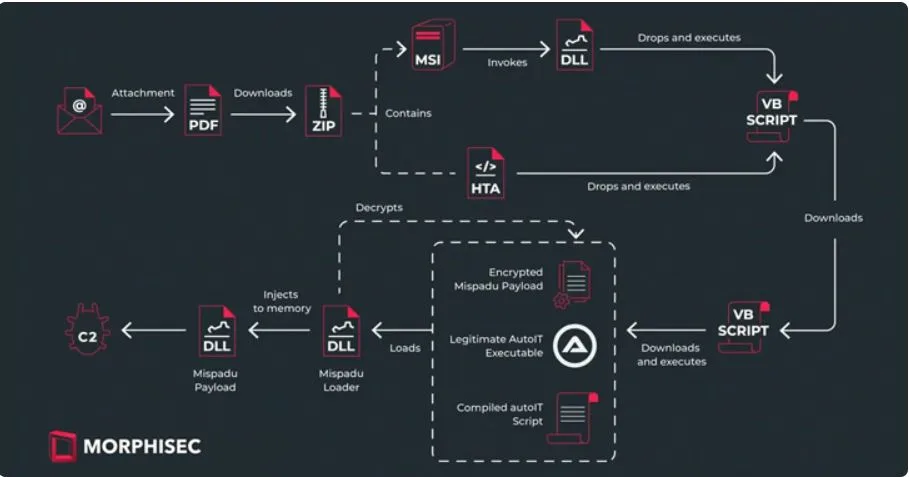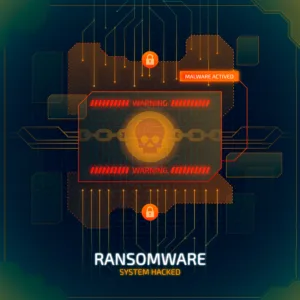
Table of Contents
Introduction
In the dynamic landscape of cybersecurity threats, the emergence of new malware poses significant challenges to individuals and organizations alike. One such threat that has garnered attention is the Mispadu Trojan—a sophisticated piece of malware designed to steal sensitive information and compromise systems.
In this blog post, we’ll delve into the workings of the Mispadu Trojan, understand its impact, and explore effective remedial measures to mitigate its risks.
Understanding the Mispadu Trojan
The Mispadu Trojan is a banking trojan that primarily targets users in Latin America, particularly Brazil and Mexico, although it has been observed in other regions as well. This malware is typically distributed through phishing emails or malicious websites. Once it infects a system, Mispadu operates stealthily, aiming to steal sensitive data such as banking credentials, credit card details, and other personal information.

Infection and Modus Operandi
Mispadu often uses deceptive tactics to trick users into downloading and executing it. Commonly, it arrives as an email attachment purporting to be from legitimate organizations, such as financial institutions or well-known brands. The email might urge the recipient to click a link or download an attachment, which then installs the trojan on the victim’s system.
Upon infection, Mispadu starts its malicious activities. It can intercept user keystrokes, capture screenshots, and even hijack the clipboard to replace copied text with malicious content—thereby compromising sensitive transactions.
Impact and Risks
The consequences of a Mispadu infection can be severe. Stolen banking credentials can lead to unauthorized transactions and identity theft. The trojan’s ability to harvest personal data makes victims vulnerable to further attacks, including phishing and extortion. Moreover, Mispadu’s stealthy nature enables it to evade detection by traditional antivirus software, allowing it to persist on infected systems for extended periods.
Remedial Measures
Mitigating the risks posed by the Mispadu Trojan requires a multi-layered approach combining proactive cybersecurity practices and user awareness.
Below are essential remedial measures that individuals and organizations should consider:
1. Implement Robust Endpoint Protection
Deploy reputable antivirus software and keep it updated with the latest definitions. Advanced endpoint protection solutions can detect and block known variants of Mispadu, preventing initial infection.
2. Educate Users about Phishing Awareness
Given that Mispadu often spreads through phishing emails, educating users about identifying and avoiding phishing attempts is crucial. Encourage skepticism towards unsolicited emails, especially those requesting sensitive information or urging urgent actions.
3. Regular Software Updates and Patch Management
Ensure that operating systems, applications, and browsers are regularly updated with security patches. Vulnerabilities in outdated software are often exploited by malware like Mispadu.
4. Enable Multi-Factor Authentication (MFA)
Implement MFA wherever possible, especially for online banking and other sensitive accounts. This adds an additional layer of security, even if credentials are compromised.
5. Restrict Administrative Privileges
Limit user privileges on endpoints to minimize the impact of a potential infection. Restricting administrative rights can prevent malware like Mispadu from executing certain malicious actions.
6. Backup Critical Data Regularly
Regularly back up critical data to secure locations. In case of a ransomware attack associated with Mispadu or similar malware, having backups can help restore operations without succumbing to extortion.
7. Regularly conduct Security Audits and Penetration Testing
Regularly assess systems and networks for vulnerabilities through security audits and penetration testing. Identifying and addressing weaknesses proactively can thwart potential threats like Mispadu.
8. Stay Informed and Vigilant
Monitor latest cybersecurity threats and trends. Encourage a culture of cybersecurity awareness within organizations to promote proactive defense against evolving threats.
Conclusion
The Mispadu Trojan represents a serious cybersecurity threat capable of inflicting significant damage. However, with vigilance, education, and proactive security measures, individuals and organizations can significantly reduce their exposure to such risks. By adopting a comprehensive cybersecurity strategy and staying informed about emerging threats like Mispadu, we can collectively fortify our defenses against cybercrime.
In summary, while the Mispadu Trojan presents challenges, it also underscores the importance of robust cybersecurity practices and user education in safeguarding against evolving threats in the digital age. By prioritizing security measures and remaining vigilant, we can navigate the cybersecurity landscape with greater resilience and confidence.
FAQ (Frequently Asked Questions)
1. What is the Mispadu Trojan?
The Mispadu Trojan is a type of banking trojan—a malicious software designed to steal sensitive information such as banking credentials, credit card details, and personal data from infected devices. It primarily targets users in Latin America, particularly Brazil and Mexico, but has been observed in other regions as well.
2. How does Mispadu infect systems?
Mispadu typically spreads through phishing emails or malicious websites. In phishing attacks, users receive deceptive emails containing malicious attachments or links that, when clicked, download and execute the trojan on the victim’s system. The trojan can also be distributed through compromised websites that prompt users to download fake updates or software.
3. What are the risks associated with Mispadu?
The risks associated with Mispadu include unauthorized access to banking accounts leading to financial loss, identity theft, and compromised personal data. The trojan’s ability to evade detection by traditional antivirus software makes it challenging to detect and remove, allowing it to persist on infected systems.
4. How can I protect myself from Mispadu?
To protect against Mispadu and similar threats, follow these best practices:
– Use reputable antivirus software: Install and regularly update antivirus software that can detect and block known variants of Mispadu.
– Be cautious of phishing emails: Exercise caution when opening emails from unknown senders or emails containing suspicious links or attachments.
– Keep software updated: Regularly update your operating system, applications, and browsers with the latest security patches to prevent exploitation of vulnerabilities.
– Enable multi-factor authentication (MFA): Use MFA wherever possible, especially for online banking and other sensitive accounts, to add an extra layer of security.
– Limit user privileges: Restrict administrative privileges on endpoints to minimize the impact of potential infections.
5. Can Mispadu be removed if my system is infected?
Removing Mispadu can be challenging due to its sophisticated nature. It’s recommended to use reputable antivirus software to scan and remove the trojan. In some cases, manual removal may require advanced technical expertise.
6. How can businesses protect against Mispadu?
Businesses can protect against Mispadu and similar threats by implementing robust cybersecurity measures:
– Educate employees: Conduct regular training sessions to raise awareness about phishing attacks and cybersecurity best practices.
– Implement endpoint protection: Deploy advanced endpoint protection solutions that can detect and mitigate advanced threats like Mispadu.
– Monitor network traffic: Use intrusion detection and prevention systems to monitor network traffic for suspicious activity.
– Implement access controls: Restrict access privileges to critical systems and data based on the principle of least privilege.
– Conduct regular security assessments: Perform regular security audits and penetration testing to identify and mitigate vulnerabilities.
7. What should I do if I suspect my system is infected with Mispadu?
If you suspect your system is infected with Mispadu, immediately disconnect it from the network to prevent further spread. Use reputable antivirus software to scan and remove the trojan. Consider restoring your system from a backup if available and monitor your accounts for any unauthorized transactions or activities.
Read more on https://cybertechworld.co.in for insightful cybersecurity related content.




















https://www.ncnonline.net/new-fortinet-survey-points-to-optimism-on-5g-promise-and-role-of-security